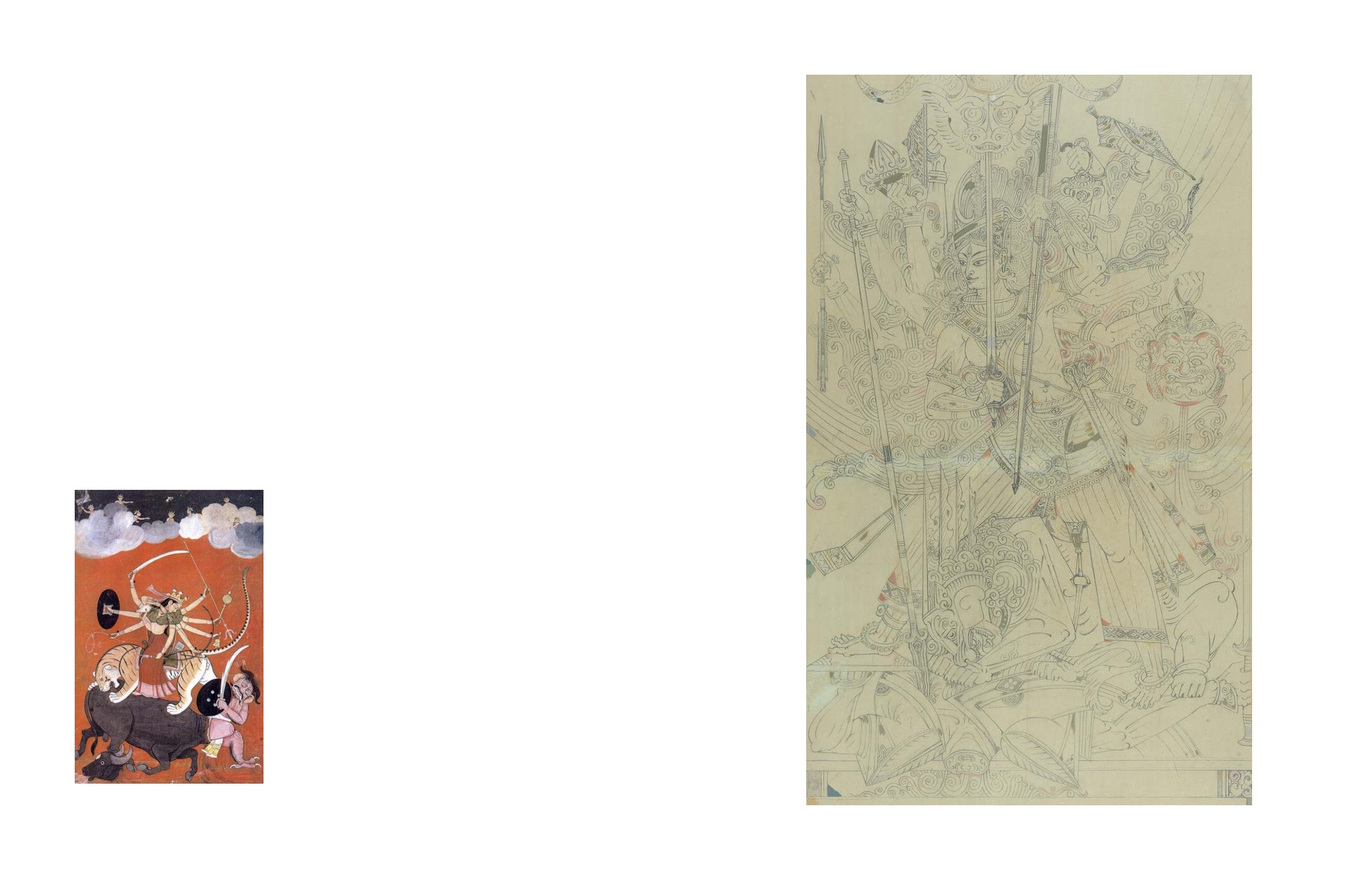

158
Saffronart | Evening Sale
159
59
NANDALAL BOSE
(1882 ‒ 1966)
Untitled (Prepatory Drawing for Mahishasura Mardini)
Circa 1944
Gouache and graphite on paper
41.75 x 25.25 in (105.9 x 64 cm)
Rs 60,00,000 ‒ 80,00,000
$ 90,910 ‒ 121,215
NON‒EXPORTABLE NATIONAL ART TREASURE
PROVENANCE:
Formerly from the collection of the artist
Thence by descent
Christie’s, New York, 17 September 2013, lot 37
Acquired from the above by the present owner
Goddess Durga, fighting Mahishasura, the buffalo-demon
Source: Wikimedia Commons
One of India’s most influential Bengal School artists,
Nandalal Bose sought to reinvigorate Indian art by rooting
it back in Indian tradition, shunning the Western academic
approach to art that prevailed at the time. He trained under
Abanindranath Tagore, who later invited him to work at
Jorasanko, Calcutta, where he came into contact with A K
Coomaraswamy, Rabindranath Tagore, and Count Okakura.
In 1920, Bose joined Kala Bhavan at Santiniketan as a teacher,
and taught many notable Indian Modernists, including
K G Subramanyan. Bose adapted Chinese and Japanese
techniques, such as calligraphy and wash, to suit an Indian
ethos. However, “The essential ingredients of his mature
style were drawn from the artistic traditions of the Ajanta
and miniature schools.” (Pran Nath Mago,
Contemporary
Art in India: A Perspective
, New Delhi: National Book Trust,
2001, p. 34) Bose was deeply influenced by mythology, the
Upanishads
and other Indian doctrines, which formed the
theoretical basis of his works.
The present lot, a preparatory sketch for Mahishasura
Mardini, illustrates the moment when Durga slays the
demon Mahishasura. This is an important theme in Bengali
culture, where the idol of Durga slaying the demon is
worshipped during Durga
puja
. Bose’s drawing is rich in
detail. Durga’s face, the demon’s severed head, and the
whorls in the background stylistically echo Japanese and
Tibetan art, but are done in Bose’s unique style. A smaller
line drawing of this sketch is in the collection of the National
Gallery of Modern Art, New Delhi, and was made for the
cover of an issue of
Desh
, a well-known Bengali magazine
.


















